I am trying to fit a GAM model to data under two constraints simultatenously: (1) the fit is monotonic (increasing), (2) the fit goes through a fixed point, say, (x0,y0).
So far, I managed to have these two constraints work separately:
For (1), based on mgcv::pcls() documentation examples, by using
mgcv::mono.con()to get linear constraints sufficient for monotonicity, and estimate model coefs viamgcv::pcls(), using the constraints.For (2), based on this post, by setting the value of spline at knot location x0 to 0 + using offset term in the model formula.
However, I struggle to combine these two constraints simultaneously. I guess a way to go is mgcv::pcls(), but I could work out neither (a) doing a similar trick of setting the value of spline at knot location x0 to 0 + using offset nor (b) setting equality constraint(s) (which I think could yield my (2) constraint setup).
I also note that the approach for setting the value of spline at knot location x0 to 0 for my constrain condition (2) yields weirdly wiggly outcome (as compared to unconstrained GAM fit) -- as showed below.
Attempt so far: fit a smooth function to data under two constraints separately
Simulate some data
library(mgcv)
set.seed(1)
x <- sort(runif(100) * 4 - 1)
f <- exp(4*x)/(1+exp(4*x))
y <- f + rnorm(100) * 0.1
dat <- data.frame(x=x, y=y)
GAM unconstrained (for comparison)
k <- 13
fit0 <- gam(y ~ s(x, k = k, bs = "cr"), data = dat)
# predict from unconstrained GAM fit
newdata <- data.frame(x = seq(-1, 3, length.out = 1000))
newdata$y_pred_fit0 <- predict(fit0, newdata = newdata)
GAM constrained: (1) the fit is monotonic (increasing)
k <- 13
# Show regular spline fit (and save fitted object)
f.ug <- gam(y~s(x,k=k,bs="cr"))
# explicitly construct smooth term's design matrix
sm <- smoothCon(s(x,k=k,bs="cr"),dat,knots=NULL)[[1]]
# find linear constraints sufficient for monotonicity of a cubic regression spline
# it assumes "cr" is the basis and its knots are provided as input
F <- mono.con(sm$xp)
G <- list(
X=sm$X,
C=matrix(0,0,0), # [0 x 0] matrix (no equality constraints)
sp=f.ug$sp, # smoothing parameter estimates (taken from unconstrained model)
p=sm$xp, # array of feasible initial parameter estimates
y=y,
w= dat$y * 0 + 1 # weights for data
)
G$Ain <- F$A # matrix for the inequality constraints
G$bin <- F$b # vector for the inequality constraints
G$S <- sm$S # list of penalty matrices; The first parameter it penalizes is given by off[i]+1
G$off <- 0 # Offset values locating the elements of M$S in the correct location within each penalty coefficient matrix. (Zero offset implies starting in first location)
p <- pcls(G); # fit spline (using smoothing parameter estimates from unconstrained fit)
# predict
newdata$y_pred_fit2 <- Predict.matrix(sm, data.frame(x = newdata$x)) %*% p
# plot
plot(y ~ x, data = dat)
lines(y_pred_fit0 ~ x, data = newdata, col = 2, lwd = 2)
lines(y_pred_fit2 ~ x, data = newdata, col = 4, lwd = 2)
Blue line: constrained; red line: unconstrained
GAM constrained: (2) fitted go through (x0,y0)=(-1, -0.1)
k <- 13
## Create a spline basis and penalty
## Make sure there is a knot at the constraint point (here: -1)
knots <- data.frame(x = seq(-1,3,length=k))
# explicit construction of a smooth term in a GAM
sm <- smoothCon(s(x,k=k,bs="cr"), dat, knots=knots)[[1]]
## 1st parameter is value of spline at knot location -1, set it to 0 by dropping
knot_which <- which(knots$x == -1)
X <- sm$X[, -knot_which] ## spline basis
S <- sm$S[[1]][-knot_which, -knot_which] ## spline penalty
off <- dat$y * 0 + (-0.1) ## offset term to force curve through (x0, y0)
## fit spline constrained through (x0, y0)
gam_1 <- gam(y ~ X - 1 + offset(off), paraPen = list(X = list(S)))
# predict (add offset of -0.1)
newdata_tmp <- Predict.matrix(sm, data.frame(x = newdata$x))
newdata_tmp <- newdata_tmp[, -knot_which]
newdata$y_pred_fit1 <- (newdata_tmp %*% coef(gam_1))[, 1] + (-0.1)
# plot
plot(y ~ x, data = dat)
lines(y_pred_fit0 ~ x, data = newdata, col = 2, lwd = 2)
lines(y_pred_fit1 ~ x, data = newdata, col = 3, lwd = 2)
# lines at cross of which the plot should go throught
abline(v=-1, col = 3); abline(h=-0.1, col = 3)
Green line: constrained; red line: unconstrained



